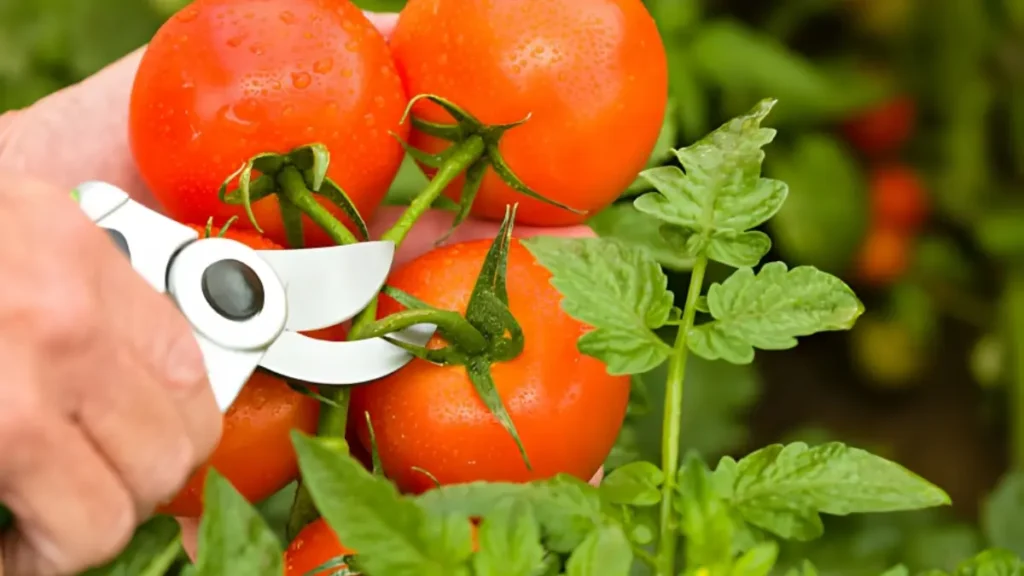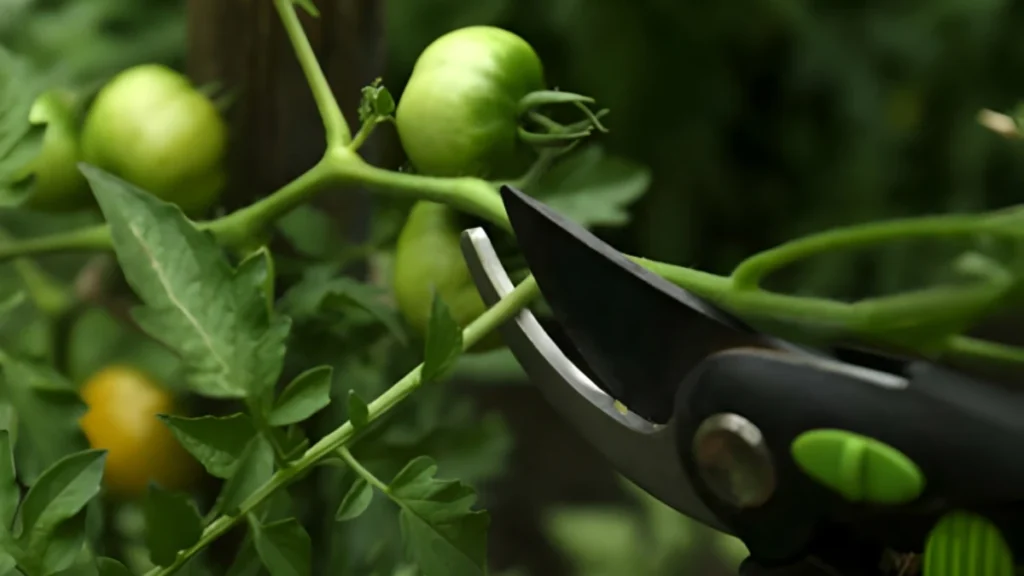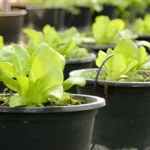Tomato pruning is a crucial procedure for encouraging robust development and optimizing harvests. Gardeners can improve air circulation, lessen the danger of illness, and direct the plant’s energy toward fruit production by carefully trimming off specific sections of the plant, such as suckers and lower leaves. However, knowing how to prune tomatoes well can lead you to a plentiful harvest and a healthy tomato crop, regardless of whether you’re growing tomatoes in a greenhouse, a backyard garden, or pots on your balcony. Here’s a quick guide on how to prune tomatoes effectively:
Step-by-step instructions on how to prune tomatoes:
Basic strategies for how to prune tomato plants
- Eliminate suckers: The tiny shoots that grow in the spaces between the main stem and branches are known as suckers. When they are young, pinch them off to stop them from devoting energy to fruit creation.
- Cut off lower leaves: Cut off any lower leaves in contact with the ground as the tomato plant grows. This enhances airflow around the plant and lowers the danger of illnesses carried by the soil.
- Thin out overcrowded branches: To let light and air into the canopy, if the plant is too dense, cut off a few branches.
Advanced techniques for how to prune tomatoes
- Determinate vs. Indeterminate varieties: Recognize how your tomato variety grows. Because they grow more compactly by nature, determinate kinds usually require less pruning, whereas indeterminate varieties benefit from more aggressive pruning to control their rapid development.
- Pruning separate vs. multiple stems: Choose whether to let your tomato plants produce several stems or direct them to a single main stem. While multi-stem pruning can result in higher overall yields, single-stem pruning focuses energy into one primary vine, producing larger fruits.
- Pruning for fruit quality and size: Some cultivators use selective pruning to support a certain shape or larger fruit sizes. To concentrate the plant’s resources on a smaller number of larger fruits entails cutting off extra branches and fruit clusters.

Instruments and optimal methods
- To achieve accurate cuts and reduce the chance of disease transmission, use clean, sharp pruning shears.
- When the plants are turgid and less likely to wilt, prune in the morning.
- Pruning material should be disposed of appropriately to stop the spread of disease.
- Throughout the growing season, keep a close eye on the plants and make necessary adjustments to trimming tactics.
Conclusion:
Learning how to prune tomatoes is a skill that can dramatically improve the health, productivity, and quality of your tomato plants. You may have a plentiful crop of tasty, homegrown tomatoes every year by grasping the fundamentals of pruning and using the appropriate methods for your unique growing environment and tastes. Discover the secrets to a bountiful tomato harvest with our expert guide on how to prune tomatoes.
A frequently asked questions:
Q1: What are the benefits of pruning tomato plants?
A1: Pruning tomato plants enhances light and air penetration, reduces disease risk, and boosts fruit output, allowing the plant to focus on producing robust fruits.
Q2: How to prune tomatoes for maximum yield?
A2: Pruning involves removing the suckers that develop in the crotch joint between the main stem and branches to maximize tomato yield. Better ventilation is made possible, and more energy is focused on fruit production.
Q3: When is the best time to pruning tomatoes?
A3: Tomato pruning is most effective in the morning or late afternoon when the plants are well-hydrated and not as stressed. To reduce plant shock, avoid trimming in the hottest part of the day.
Q4: How to prune tomato plants when they are flowering or fruiting?
A4: To minimize stress on the plants and decrease fruit output, it is advisable to avoid excessive trimming during the flowering and fruiting seasons. Rather, concentrate on mild pruning to preserve ventilation and get rid of any unhealthy or diseased foliage.



